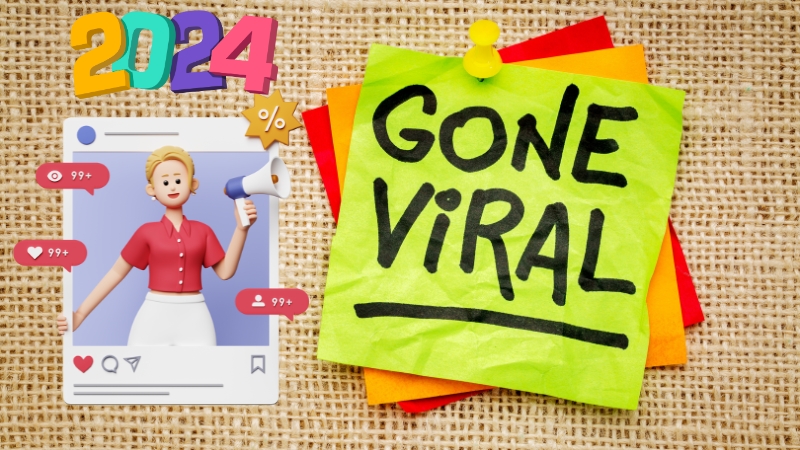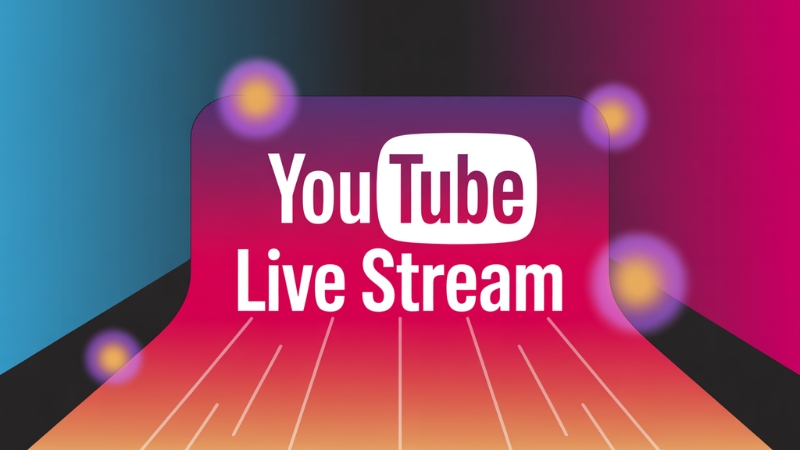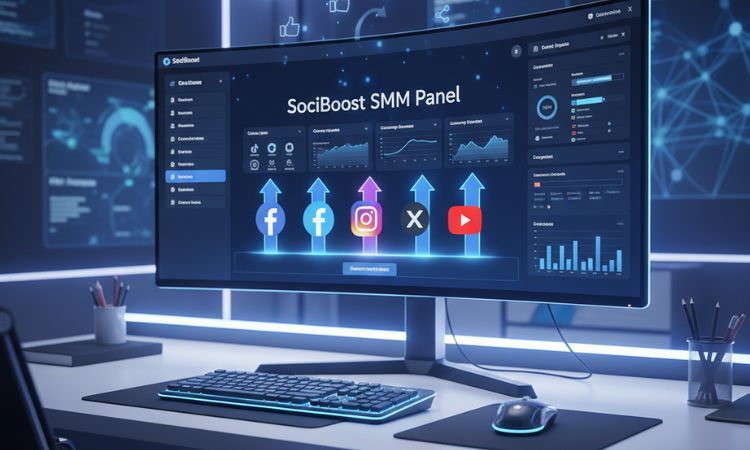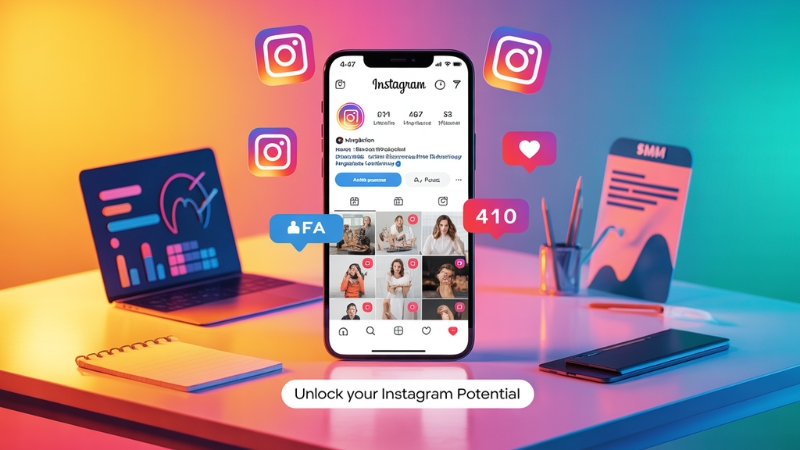The Best Time to Post on Social Media in 2025 to Go Viral: For Every Major Platform
The best times to post on social media in 2025 for viral success hinge on understanding your audience’s behavior, leveraging platform-specific algorithms, and staying updated on emerging trends.
Peak posting times normally align with when users are most active, such as early mornings, lunch breaks, and evenings. However, every platform, whether it’s Facebook, Instagram, Twitter, LinkedIn, or TikTok, has its own optimal periods based on user habits and types of content. It's essential to experiment with timing, use data-driven strategies, and adapt to user preferences to maximize visibility and engagement, as well as ongoing changes in platform algorithms.
Content Summary
The importance of posting at the best times on social media
Posting at the best times on social media is very important, as it maximizes the likelihood that your content will be engaged with, seen, and shared. Timing your posts to align with when your audience is most active increases visibility, leading to higher interaction rates such as likes, comments, and shares. Platform algorithms often favor this engagement, which can elevate your content's reach, making it more likely to go viral. Additionally, the right timing helps ensure that your message hits the proper audience at the right moment, amplifying its impact.
Revealing the best times to post on social media
Recently, I have embarked on an ambitious project that is mainly based on finding the best times to post on every major social network in 2025. Let's dive deeper into every aspect of the best times to post on social media in 2025, with a focus on the factors that contribute to virality and how to cater your strategy for each platform. I'll also include additional insights into advanced techniques and emerging trends to help you optimize your social media presence. Let's get into the discussion:
1. Understanding audience behavior
Time Zones and Global Audience
- Segmented posting: If you have a global audience, consider your posts by region. Schedule different posts for North America, Europe, and Asia-Pacific, for instance, based on when users in those regions are most active.
- Regional Insights: Leverage analytics tools to understand when various segments of your audience are most active. For example, if your biggest audience is in New York and London, then you should post at times that align with both time zones (like 12 PM EST) and can help reach the maximum number of people.
Daily Routines and Behavioral Patterns
- Morning Routine: Early mornings (6 AM–9 AM) are the time when most of the users check their phones for news, emails, and social updates. Posting content that aligns with starting the day, for example, motivational quotes, news updates, or quick tips, can reach this audience.
- Lunch Breaks: Posting around 11 a.m.–1 p.m. can target audiences during their lunch break, a time when most of them might be browsing social media for a quick distraction.
- Evening Wind Down: Users may relax and browse through their feed between 7 p.m. and 10 p.m. Content like engaging stories, entertainment, important news, or tutorials can perform well during this period.
2. Quick Guide: The Best Time to Post on Social Media
- Facebook: 9 a.m.–10 a.m. on weekdays
- Instagram: 7 a.m.–8 a.m. on weekdays
- Twitter: 11 a.m. on Monday and Friday.
- LinkedIn: 7 AM–9 AM; and 5 PM–6 PM
- TikTok: 2 p.m. on Mondays, 4 p.m. on Wednesdays, and 8 a.m. on Sundays.
- YouTube: 12 PM–3 PM
- Pinterest: Evenings and weekends are particularly good times to post.
03. Platform-Specific Dynamics
- Content Type Consideration: Videos, especially live videos, mostly have higher engagement on Facebook. Scheduling live streams during peak times (9 a.m.–10 a.m. on weekdays) can significantly increase real-time interaction and post-event engagement.
- Engagement boost: Encourage your audience to share and comment by posting engaging questions or hosting polls during high-traffic periods. This will help boost the engagement of your posts.
- Carousel Posts: These allow you to share numerous images or videos in one post. Since Instagram often re-shows carousel posts if not fully swiped through, this kind of content has a higher chance of being seen even after the initial post time (7 AM–8 AM on weekdays).
- Instagram Stories: Create polls, quizzes, and sliders to increase interaction during peak hours (usually mornings and late evenings). Stories posted during these times can be relevant throughout the day, especially if they grow engagement.
- Real-Time Relevance: Twitter thrives on real-time news and trending topics. Posting during high-traffic periods (morning and lunch hours) when your audience is discussing or thinking about relevant topics can enhance engagement.
- Threading Strategy: Posting threads (a series of connected tweets) during peak times (11 a.m. on Monday and Friday) can hold your audience engaged longer and encourage more retweets and likes.
- Professional Tone: As LinkedIn is a professional network, it offers insights, industry news, or professional advice that perform well, especially when posted during work hours (7 AM–9 AM and 5 PM–6 PM).
- Employee Advocacy: Inspire employees to share company posts during these times to get extended reach, as LinkedIn prioritizes posts shared by users over company pages.
TikTok
- Viral Trends: TikTok's content is generally driven by trends and challenges. Posting trend-aligned content at peak times (evenings and weekends, 2 p.m. on Mondays, 4 p.m. on Wednesdays, and 8 a.m. on Sundays) can quickly maximize visibility and engagement.
- Hashtag Strategy: You can use trending hashtags that are relevant to your content to elevate discoverability during these optimal periods.
YouTube
- Premiere Strategy: Use YouTube's Premiere feature to schedule a video release during peak hours (12 p.m.–3 p.m.). This not only creates anticipation but also fosters a community viewing experience with live chat during the premiere.
- Engagement Time Frame: Post content on Thursday and Friday afternoons to attract viewers who are more likely to watch videos as they wind down from the workweek.
- Seasonal Content: As Pinterest is often used for planning and inspiration, timing posts to align with seasonal trends, for example, holiday planning and summer vacations, can elevate content reach. Evenings and weekends are especially good times to post this kind of content.
- Pin Engagement: Pinterest content has a longer lifespan, unlike other social media platforms. You can gain traction over time by posting at optimal times, leading to sustained engagement.
04. Seasonal and event-driven factors
Seasonal Trends
- Holiday Seasons: Generally, engagement increases during the holiday season (November through December) as people look for gift ideas, get-together ideas, recipes, and holiday inspiration. Your posting schedule should be adjusted to match the heightened activity during these months or seasons.
- Summer Slump: Social media activity can dip during the summer months because people spend more time outdoors during this season. However, targeting specific summer-related content during early mornings or late evenings can still yield good results for you.
Event-Driven Strategy
- Cultural Events: Aligning content with major cultural events, for example, the Olympics and Grammy Awards, can increase your content's relevance and engagement. Schedule posts to go live during these events or right before, because in those times social media traffic remains high.
- Real-Time Marketing: Responding to live events with timely posts or ads can drive significant engagement. This requires real-time monitoring and the agility of trends.
05. Algorithm Updates and Changes
Platform Algorithm Nuances
- Engagement Timeframe: Social media platforms like Instagram and Facebook prioritize content, and it receives quick engagement (likes, comments, and shares) soon after being posted. You can trigger this early engagement by posting during times when your audience is most active.
- Content Recency: Twitter and TikTok are more focused on recent contents. Posting multiple times a day during peak hours can help ensure that your content remains visible and emgaged.
Ongoing algorithm changes
- Stay Updated: Algorithms are always evolving. Follow social media blogs and keep up with changes by attending webinars and using analytics tools to monitor the impact of any updates on your post performance.
06. Data-Driven Optimization
Deep analytics use
- Heatmaps: Use heatmap tools to know when your audience is most active on every platform. This allows for more specific timing of posts.
- Advanced Segmentation: Analyze behaviors, interests, and past interaction times and go beyond basic demographic segmentation to better tailor your posting schedule.
A/B Testing
- Content Variations: Test different times and different types of content, such as videos, images, and text posts, at these times. This can help you find out what resonates most with your audience at specific times.
- Frequency of posting: Experiment with the frequency of posts at different times to reveal the best time to post. Posting more frequently during peak hours can sometimes increase the overall engagement.
07. Cross-Platform Synergy
Integrated Campaigns
- Consistent Messaging: Develop a consistent theme across platforms when adapting content to each platform's strengths. For example, a new product launch can be teased on Twitter, completely revealed on Instagram, and followed by a detailed video on YouTube.
- Staggered Posting: Stagger posts based on peak times for every platform to maintain a steady flow of engagement instead of posting the same content simultaneously across all the platforms.
Platform-Specific Adaptation
- Content Repurposing: Craft your targeted content for each platform while maintaining a unified message. You can condense a blog post into a Twitter thread, a visual representation on Instagram, and discuss it in detail on LinkedIn.
08. Emerging trends and technologies
AI and predictive analytics
- AI-Powered Tools: Leverage AI tools that analyze your audience behavior, posting history, and current trends to reveal the best times to post. These tools can dynamically adjust your posting schedule to maximize engagement.
- Predictive Scheduling: To allow you to pre-plan your content calendar effectively, you should use predictive analytics to determine when future posts are likely to perform best.
Short-Form Video Dominance
- Algorithm Preferences: Algorithms are currently favoring short-term video platforms like TikTok and Instagram Reels due to their high user engagement. Posting engaging and high-quality short videos during peak times can greatly elevate your visibility.
09. Community Engagement:
Interactive Posting
- Immediate Response: The first few minutes after posting can signal to algorithms engaging with your audience that your content is valuable, increasing its reach. Be prepared to respond to comments or questions quickly.
- User-Generated Content: To create and share content related to your brand, encourage your followers. Reposting this content during peak times can amplify its reach and foster community loyalty.
Influencer Collaborations
- Time-Aligned Partnerships: Partner with influencers who can share your content during their peak engagement times. Most influencers have a keen sense of when their audience is most active, which can help amplify their reach.
10. How to Find Your Best Time to Post
Start using platform-specific analytics such as Facebook Analytics or Instagram Insights to identify when your followers are most active and find the best time to post on social media.
Then, post similar content at different times of the day and week and make an experiment. Track engagement metrics such as likes, comments, shares, and reach for each post to record the time when your audience is most responsive.
Adjust your posting schedule based on the data to focus on the most effective times, and regularly revisit your strategy because your audience and platform algorithms evolve.
If you want more specific ideas, you can follow the following:
- Analyze audience insights: Use platform analytics tools to see when your followers are most active.
- Experiment with Posting Times: Post similar content at different times and track engagement metrics like likes, comments, and shares.
A/B Testing
Compare the performance of posts at various times to identify the most effective slots.
- Monitor and adjust: Regularly review your data, refine your posting schedule based on what works best, and adapt as your audience or algorithms change.
- Use external tools: Try using social media management tools, as they suggest optimal posting times based on historical data and trends.
Learn More: Advantages and Disadvantages of Social Media Marketing 2025
Conclusion
The best times to post will change according to the algorithms and user behavior. Review your social media performance data and adjust your strategy regularly to maintain optimal engagement.
Posting at the right time is important, but content quality remains the most critical factor. Ensure that your content is not only well-timed but also engaging, valuable, and consistent with your brand's message.
You can significantly increase your chances of going viral on social media in 2025 by combining these
detailed insights with continuous experimentation and adaptation. The key to going viral is to remain
flexible.





